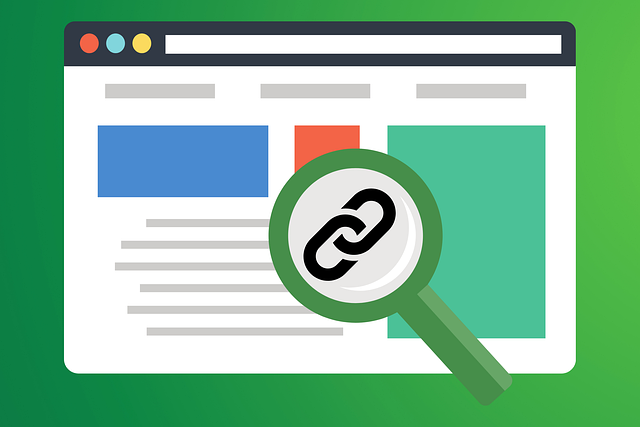Internal linking, powered by smart internal links plugins, is a vital SEO strategy enhancing website performance. These tools seamlessly integrate with CMS platforms like WordPress, enabling efficient content organization and advanced analytics for better user behavior understanding. By automatically generating contextually relevant links, these plugins improve site navigation, boost user engagement, and elevate search engine rankings. Effective use involves identifying key pages, analyzing backlinks, and refining links based on performance data while avoiding keyword stuffing. Smart internal links plugins are game-changers in today's digital era, fostering a natural flow of content that caters to both search engines and audiences. Future trends focus on AI-driven analytics for predictive user behavior and enhanced contextual relevance.
In the digital landscape, effective internal linking is key to enhancing user experience and boosting SEO. This article delves into the intricacies of smart internal links plugins, offering a comprehensive guide for maximizing their potential. From understanding the fundamental importance of internal linking to exploring powerful plugins and identifying crucial features, we provide a step-by-step implementation process. We also share real-world success stories and delve into future trends, ensuring you’re equipped with the knowledge to leverage smart internal links plugins for optimal website performance.
- Understanding Internal Linking: Why It Matters for SEO
- Uncovering the Power of Smart Internal Links Plugin
- Key Features to Look For in an Ideal Internal Linking Tool
- Step-by-Step Guide: Implementing Smart Internal Links
- Real-World Success Stories: How Plugins Transformed Websites
- Future Trends: Evolving Internal Linking Strategies with Technology
Understanding Internal Linking: Why It Matters for SEO

Internal linking is a fundamental SEO strategy that often goes overlooked despite its immense potential to boost website performance. It involves creating smart internal links between relevant pages on your site, guiding users and search engines alike to valuable content. By employing a well-thought-out smart internal links strategy, you can significantly enhance the overall user experience, improve page authority, and increase the likelihood of ranking higher in search engine results.
Using tools like a smart internal links plugin can streamline this process. These plugins offer intuitive interfaces that allow you to identify relevant pages for linking, analyze anchor text distribution, and automatically generate optimal link structures. By following best practices detailed in a smart internal links tutorial, you can ensure your website’s architecture is not only search-engine-friendly but also user-friendly, leading to better engagement metrics and increased conversions. Through smart internal links optimization, your website becomes a well-connected web of knowledge, encouraging visitors to explore more content and reducing bounce rates.
Uncovering the Power of Smart Internal Links Plugin

Uncovering the Power of Smart Internal Links Plugin
In today’s digital era, optimizing your website for both users and search engines is paramount. One effective strategy that often gets overlooked is smart internal linking. This powerful tool goes beyond simple hyperlinking; it involves a strategic approach to guide users and search algorithms through your content. The Smart Internal Links Plugin emerges as a game-changer in this realm, offering a comprehensive solution for those seeking to enhance their website’s navigation and SEO performance.
By employing a smart internal links tutorial or strategy, you can create a seamless user experience while improving the overall optimization of your site. This plugin enables you to effortlessly integrate relevant content within your pages, fostering a web of interconnected ideas that both informs and engages visitors. Whether you’re aiming for smart internal links optimization or simply looking to streamline your website’s structure, this innovative tool provides an efficient and effective method to elevate your online presence.
Key Features to Look For in an Ideal Internal Linking Tool

When choosing a smart internal links plugin for your website, several key features stand out as essential for effective content organization and SEO optimization. Firstly, look for tools that offer seamless integration with popular content management systems like WordPress, ensuring smooth setup and management of your internal link structure. Advanced analytics is another critical aspect; capable plugins should provide insights into click patterns, helping you understand user behavior and refine your smart internal links strategy accordingly.
Additionally, consider features promoting automatic link generation based on content relevance, which significantly saves time and effort in manually creating internal links. These tools should also enable easy editing and rearranging of links, allowing for dynamic adjustments to your smart internal links optimization as your website content evolves. Remember, a robust smart internal links plugin is an invaluable asset in enhancing user experience and boosting your site’s search engine rankings through strategic link placement.
Step-by-Step Guide: Implementing Smart Internal Links

Implementing smart internal links is a strategic process that can significantly enhance your website’s SEO performance. Here’s a step-by-step guide to help you navigate this strategy effectively, leveraging a smart internal links plugin for optimal results. Begin by identifying key pages on your site that hold value—these will be your primary targets. Next, analyze existing backlinks and content to uncover relevant internal linking opportunities. A crucial tip: prioritize contextual anchors that accurately reflect the linked page’s content, improving both user experience and search engine comprehension.
Once identified, employ your chosen smart internal links plugin to seamlessly integrate links within your content. The plugin should offer features like easy link editing, real-time analytics, and automation capabilities for efficient optimization. Regularly review and update these links based on performance data, ensuring they remain relevant and beneficial both for users and search engines. Remember, smart internal links tips include maintaining a natural linking flow, avoiding keyword stuffing, and continuously refining your strategy based on user behavior and SEO trends.
Real-World Success Stories: How Plugins Transformed Websites

In today’s digital landscape, website owners are constantly seeking innovative strategies to enhance user engagement and improve search engine rankings. One powerful tool that has transformed the way websites are structured and optimized is the smart internal links plugin. This technology has revolutionized the way content is interconnected, making it easier for users to navigate and search engines to crawl through complex websites. Success stories abound of businesses that have witnessed significant growth by implementing a smart internal links strategy. These plugins enable dynamic linking, automatically generating relevant links within content based on context and user behavior, thereby creating a seamless user experience.
For instance, consider a blog that publishes numerous articles on diverse topics. With a smart internal links tutorial at hand, the website can effectively weave together related content. When an article about “SEO best practices” is published, the plugin might suggest linking to older, complementary posts like “Understanding Meta Tags” or “The Art of Keyword Research.” This smart internal links optimization not only improves user retention but also tells search engines that the site is rich in relevant information, boosting its authority and visibility. As a result, organic traffic increases, leading to higher rankings and better conversion rates.
Future Trends: Evolving Internal Linking Strategies with Technology

As technology continues to advance, so too does the landscape of SEO and internal linking strategies. One notable trend is the increasing reliance on smart internal links plugins that leverage AI and machine learning algorithms to optimize link placement and improve user experience. These tools not only identify relevant content within a site but also suggest strategic anchor text for improved search engine visibility.
Looking ahead, the future of smart internal links SEO involves even more sophisticated optimization techniques. Anticipating user behavior through advanced analytics, these strategies will ensure that internal links are placed in contexts that resonate with visitors, enhancing engagement and reducing bounce rates. By integrating smart internal links strategy into content management systems, marketers can streamline the process of creating a seamless, interlinked web that not only satisfies search engine algorithms but also captivates audiences.
